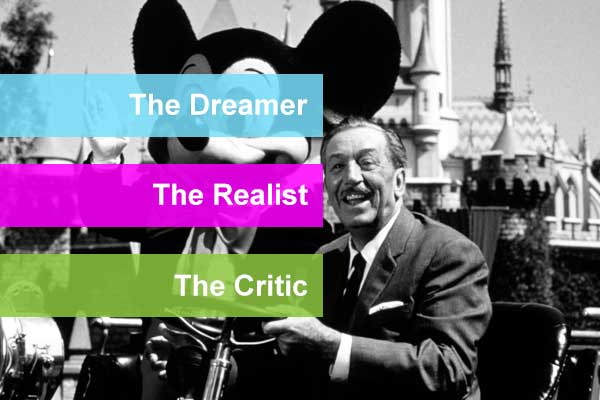What Is Creativity?
Creativity, creative thinking, and creative people-these words are heard more and more often in conversations today. Employers demand creativity, private schools nurture creative thinking in children, and internet projects are always on the lookout for creative minds. In today’s world, creativity is essential, as the era of templates and clich�s is long gone. But what exactly is creativity?
The term “creativity” comes from the English word “create,” meaning “to make” or “to produce.” It refers to a person’s creative potential, characterized by the willingness to accept and generate fundamentally new ideas that differ from conventional or traditional ways of thinking. Creativity is also seen as the ability to solve problems.
According to American psychologist Abraham Maslow (famous for the Hierarchy of Needs), creativity is an innate trait present in everyone, but often lost due to factors like education, upbringing, and social conditions.
On a day-to-day level, creativity can show up as resourcefulness-the ability to achieve goals and find solutions to difficult situations by using the environment and available resources in unconventional ways. On a larger scale, creativity is about overcoming challenges with limited tools or resources and thinking outside the box to meet both material and non-material needs.
As with any other skill, creativity can be lost or, conversely, developed and enhanced. There are many ways to boost creativity, such as brainstorming, synectics, the focal objects method, and others. However, one of the most famous and effective methods is Walt Disney’s Creative Strategy.
Walt Disney’s Creative Strategy
Before diving into the strategy itself, it’s important to clarify that its author is not Walt Disney, but Robert Dilts. Here’s a brief introduction to both:
- Robert Dilts is a pioneer in neuro-linguistic programming (NLP), the author of many NLP techniques (such as generative NLP, reimprinting, and the strategy of effective writing), as well as articles and books on the subject. He was one of the first students of NLP founders Richard Bandler and John Grinder, and also studied under Gregory Bateson and Milton Erickson.
- Walt Disney is world-famous for his animated films. He was an animator, actor, director, screenwriter, and producer. Disney founded “Walt Disney Productions,” which later became the multimedia empire “The Walt Disney Company.” He created the first sound and musical cartoons in film history, directed 111 films, and produced 576.
Both Dilts and Disney were not just professionals in their fields, but people with remarkable creative potential. That’s why this strategy deserves special attention.
Walt Disney used many effective creative strategies in his work, which is why his creations are still loved by millions worldwide. Robert Dilts identified the most productive of these strategies, which can be applied in many areas of life. The main goal is to organize a person’s thinking process during planning to activate their creative potential at any time and place. This leads us to the core principles of the strategy.
Principles of Walt Disney’s Creative Strategy
The foundation of Disney’s creative strategy is the separation of four thinking positions (or perspectives): the Dreamer, the Observer, the Realist, and the Critic. Most people mix these positions, but by deliberately separating them, you can maximize their unique strengths.
Another key principle is that all four positions work together as a single mechanism to develop the best way to implement any project.
Steps of Walt Disney’s Creative Strategy
There are 12 steps in Disney’s creative strategy:
- Prepare four physical spaces.
- Enter the “Dreamer” position. Imagine the best, most ideal way to realize your project. Visualize yourself at your best, successfully implementing your idea. Use vivid, colorful mental imagery for maximum effect.
- Enter the “Observer” position. Here, your task is to ensure effective interaction between all positions and proper communication among them. Evaluate the Dreamer’s work, offer recommendations, and mentally pass the project plan from the Dreamer to the Realist.
- Enter the “Realist” position. Take on the role of the doer who enjoys taking action. Review the plan and select only what you can fully commit to. Think about the real steps needed to bring the project to life.
- Enter the “Observer” position again. Assess the Realist’s work, draw conclusions, and make adjustments if needed. Then pass the refined idea from the Realist to the Critic.
- Enter the “Critic” position. Stay positive. Analyze the plan, predict possible obstacles and mistakes, and address them before implementation. Formulate questions and tasks for the Dreamer, considering potential problems. What could go wrong? Could the project have negative effects? State any required improvements in a positive way.
- Enter the “Observer” position again. Evaluate the Critic’s work and add to it if necessary. Then pass the information processed by the Realist and Critic back to the Dreamer for further refinement.
- Enter the “Dreamer” position again. Analyze the feedback and create a modified, updated vision of your project. The project should now be clearer and more tangible.
- Enter the “Realist” and then the “Critic” positions (with the Observer in between). Process the additional information as before.
- Continue cycling through all positions until all “participants” are fully satisfied with the implementation plan.
- Integrate the positions. Once the plan is finalized, enter each position (except Observer) and focus on the states and approaches unique to each. Then combine them into a unified whole.
- Adjust for the future. At this stage, you have a complete picture of your project and the steps needed to achieve your goal. Plan your first practical actions and start implementing them.
Who Can Use Disney’s Creative Strategy?
Walt Disney’s creative strategy is highly effective in practice. It’s not just for animators, directors, and screenwriters-businesspeople, entrepreneurs, artists, scientists, and even homemakers use it to great success.
Try applying Walt Disney’s creative strategy yourself, and you’ll see just how powerful and effective it can be!



